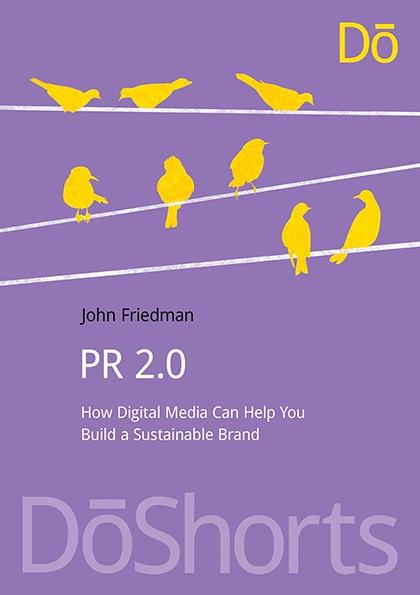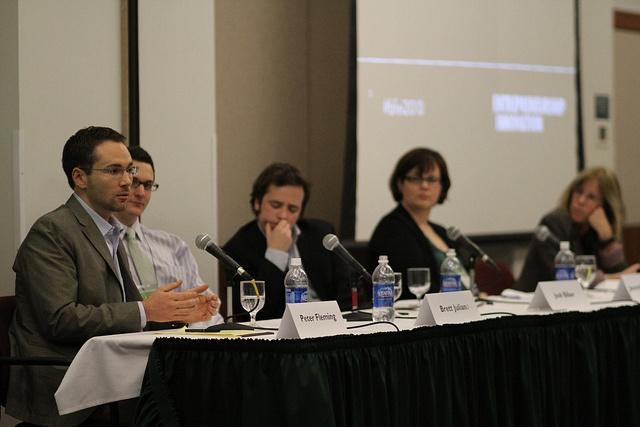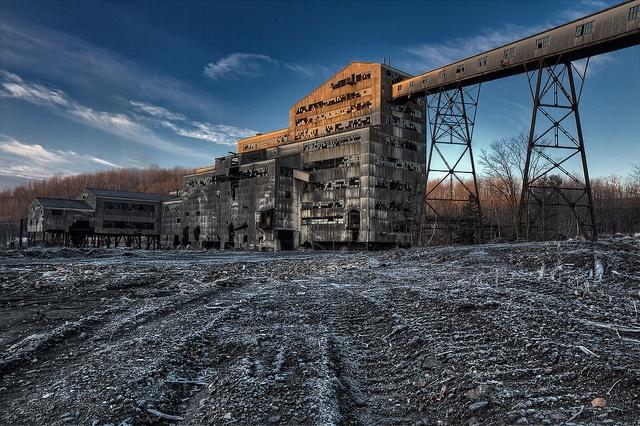CSR Report Review: Wells Fargo Reaches $37B in Environmental Loans & Investments


Banks do not have the most sterling reputation among the general public, due to the 2008-2009 financial crises and the general distrust many of us feel toward financial institutions. But there is evidence that banks are doing more on social and environmental responsibility challenges, and quite often the programs are far more creative than simply cutting a check for a local philanthropy. Wells Fargo, within its most recent interim corporate social responsibility (CSR) report, is an example of how a massive bank can run a comprehensive sustainability program.
One way in which Wells Fargo is burnishing its sustainability credentials is by becoming one of the more aggressive and creative lenders within the financial sector. At a time when banks are often reticent to lend money to anyone, Wells Fargo claims it has made a total of US$37 billion in loans and investments within the clean technology and green building sectors since 2012 — already passing the company’s goal of US$30 billion in such investments by 2020. Most recently, the company launched a US$1 million program with Imagine H2O, a Northern California NGO that runs an annual water technology competition. These loans and investments comprise just one example of what Wells Fargo is doing on the environmental front.
In addition to being a “green” lender, Wells Fargo is cleaning up its own operations as well. The company says it has reduced greenhouse gas emissions by 24 percent, well on the way toward meeting its 2020 goal of a 35 percent reduction. Energy and waste diversion goals are also making steady progress. Finally, Wells Fargo is halfway toward its goal of upgrading 35 percent of its leased and owned buildings to LEED certification by the end of this decade.
And inside those buildings are 265,000 employees, who offer plenty of opportunities for volunteering within local communities. Wells Fargo makes the case that its employees are making a difference at many levels, both in time and financial contributions. Last year its workforce volunteered 1.74 million hours, for a total of over 6.4 million hours since 2011. Employees are opening their pocketbooks, too, with $97.7 million pledged to various causes in 2014, a 10 percent increase from the previous year.
One interesting employee-led project that combines the social and environmental takes place in Colorado: A Wells Fargo manager in the Denver area took her passion for volunteering at local hunger programs and channeled it toward launching a nonprofit that distributes food to those in need. The organization, Foraged Feast, collects unwanted produce from farmers, wholesalers and even private homes. Wells Fargo’s volunteer-leave program offers paid leave to employees for programs such as Foraged Feast — which also received a grant from the bank.
Wells Fargo’s programs go beyond corporate philanthropy; they also make good business sense. As a company communications spokesperson explained to me last week, the bank is the largest agricultural lender and insurer in the United States. Being a more responsible company is more than showing a record as a good corporate citizenship to a more discerning customer base. Between water and energy becoming scarcer, along with impacts on everything from food security to local economic development, a sustainability agenda like that of Wells Fargo’s is also a solid long-term investment in the communities in which the company conducts business.
Image credit: Wells Fargo
Couture Smog Masks Unveiled At China Fashion Week


We’ve all seen the powerful images of residents in China’s most polluted cities, like Beijing and Shanghai, wearing face masks to protect themselves against the dangerous levels of smog. But at last fall’s Mercedes-Benz China Fashion Week, designers incorporated the respiratory gear into their shows: Dozens of models strutted down the catwalk in smog masks, while designer Yin Peng created masks for his models that perfectly coordinated with garments from his sportswear collection, CNN reported.
Yin told CNN that he was surprised his couture masks had attracted so much attention and said China’s poor air quality was not what inspired him to design the masks that complement his athletic gear.
"From my perspective, no matter how good the outside environment is, the key is how we mix the situation outside with our hearts," he told CNN.
Whether or not Yin intended to make a political statement or social commentary, his use of smog masks as fashion accessories highlighted China’s air pollution problem and the government’s failure to improve air quality.
Respiratory masks meant to shield against the harmful effects of air pollution are a multi-million dollar industry in China, according to Reuters. In 2013, Chinese consumers spent 870 million yuan ($140 million) on anti-smog devices like face masks and air purifiers on the country’s biggest e-commerce site, Taobao.
But most smog masks aren’t providing Chinese citizens much protection: A survey of consumer face masks by the China Consumers Association found that only nine out of 37 types tested met standards for filtering particulate matter and enabling easy breathing.
"The vast majority of face masks on the market give no protection against PM2.5, even if the manufacturers claim they do," Lei Limin, vice chairman of the China Textile Commerce Association, told Reuters -- referring to the type of air pollution that is most dangerous to human health.
Public awareness and concern about the health effects of China’s toxic smog is only growing, as is pressure on the government to take action.
Late last month, a biting documentary about China’s air pollution problem went viral in the country, garnering more than 300 million views in just under a week. “Under The Dome” – which was somewhat critical of the Chinese government for failing to enforce environmental regulations, but optimistic about finding solutions to improve air quality – only heightened the national debate, even when government censors eventually ordered the film be taken offline.
Yet, even as the Chinese government tried to squash the national conversation inspired by “Under The Dome,” government officials were making strides to address air quality. President Xi Jinping told legislators at the National People’s Congress that he would “give an iron hand to any polluters in this smog-choked country,” and Premiere Li Keqiang told parliament that the country would aim for zero percent growth in coal consumption.
And just last week the government announced it would close the last of its four major coal-fired plants in Beijing next year, in an effort to combat air pollution, Bloomberg reported. The facilities will be replaced by four gas-powered plants that will produce fewer emissions and can supply more than double the amount of electricity that coal plants can.
Harald Heubaum, lecturer in global energy and climate policy at London’s School of Oriental and African Studies, told Newsweek that the move was motivated not only by recent protests over air pollution, but also by economics.
“If people are sick more often [because of poor air quality] and can’t come to work, that has an impact on the economy,” Heubaum said.
Indeed, a report from the Global Commission on the Economy and Climate last year found that PM 2.5 air pollution was linked to approximately 1.23 million premature deaths in China in 2010 – costing around 13 percent of GDP in lost economic activity, Newsweek reported.
But, Heubaum told Newsweek, even as China is shutting coal plants in its eastern provinces, it will likely build new facilities in the country’s rural western provinces. So, is China serious about solving its pollution problem, or is it just saving face? One thing is for sure: If the Chinese government continues to put off its air quality crisis, officials will have an even bigger challenge on their hands, as Chinese citizens become bolder in their critique of poor environmental management -- whether it's in a documentary or on the catwalk of a fashion show.
Image credit: China Fashion Week
Boards Lack Social and Environmental Risk Governance


By Dr Raj Aseervatham
Boards are theoretically responsible for strategic direction and overall governance in corporations. Let’s look at the practice as it is applied to non-financial (such as social and environmental) issues, and see if they are likely to fulfill this promise in these areas.
The board setup
The average board composition for large corporations is seven to 12 members. The annual remuneration per board member might average US$120,000 to US$300,000, plus various committee duties and incentives (sources: Bloomberg (US), Deloitte (UK) and AICD (Australia) board statistics, 2014). Independent, non-executive board members tend to be in the lower range. That’s the floor level of shareholder investment in their boards.
The average time spent in board meetings, meticulously detailed in company annual reports, comprises 10 to 12 days per board member, per year. It is estimated (by conscientious board members) that conscientious board members spend two to three times that amount of time, in total, on preparation for meetings and in forming their own points of view on specific issues. That’s the effort for the money.
Where does the effort get focused? Before the global financial crisis, a lot of this time was spent on financial risk. After the crisis, this focus amplified. Debt, finance and the ability to maintain liquidity attracted even more attention than pre-2007.
The social and environmental gap
So, how and when are social and environmental issues raised, reviewed and considered today?
More often than not, they are raised through a compliance discussion. Often, the health and safety aspects of companies – now a mainstay for most corporations - have an environmental element added. As many board members have observed, the health, safety and environment considerations (or HSE) usually has a little ‘e’ for environment. It takes up comparatively very little time in HSE discussions. Where it is raised in these discussions, there is a large focus on regulatory compliance, fines, class actions and liabilities -- and not much else.
The tactical and defensive nature of this type of discussion is at odds with a board’s role in setting strategic direction.
The social element is largely addressed from a reputational perspective. These discussions can and do have strategic overtones, but they are more focused on the question, "How do we look to the outside world?," than the question, "What is our place in society, and how do we keep or enhance it?"
Clearly that is all a bit underwhelming. We seem to be operating under the assumption that corporations exist to fulfill a financial need. Oddly, nobody argues that good financial outcomes are largely a consequence of adequately fulfilling or exceeding societal needs and expectations -- but it seems our boards are not set up to operate that way.
Closing the gap
So, how would we address this? Let’s look at board mechanics. Two pivotal things make up board mechanics and performance – its people and its governance.
Firstly, the strength of a board depends on the characteristics of its people, and one generic characteristic is diversity of opinion. If there aren’t different perspectives, and they aren’t being brought to bear robustly on discussions, the board is free-riding and group-thinking at the shareholders’ expense. Many boards are heavily populated by experts in finance and law as well as industry experts, and thinly populated with other expertise. Of course, the industry, finance and legal experts have their own perspectives on social and environmental issues, but these are rarely perspectives based on professional strengths. Therefore, contrastingly, board expertise is relatively weakly anchored in in expertise outside of industry, financial and legal areas.
This is changing, but at a remarkably slow pace. Where change has occurred, more often than not, an external environmental or social advisory body is used to inform the board; but of course these bodies have no real power to make decisions in the corporations they advise. It would be optimistic to conclude that we have genuinely started to reflect knowledgeable board composition in this area.
Secondly, the effectiveness of the board (in other words, how the strength of its people is put to good use) depends on its governance.
Well-governed boards have systematic ways of addressing certain issues. Risk committees focus specifically on risk. The risk lens (which comes with its inverse, the opportunity lens) is one of the most insightful and adaptable tools for boards. Climate change and water scarcity can be addressed as social and environmental risks (and opportunities). Customer expectations, government policy changes, socio-political landscapes and many other external societal factors can be addressed as risks (and opportunities). Current, near/mid-term future and far future risks can be addressed for each of these risk types, provided there is an enterprise risk management process that considers risks other than financial and legal.
The state of today
Board composition is diversifying, with human resources and IT skills being increasingly recruited. However, the prevalence of social and environmental skills on boards today is miniscule.
And while it appears that there is a systematic and recognized means of addressing broader social and environmental risks using risk committees and enterprise risk management, the startling reality is that it is hardly used in board governance.
A Deloitte report published in 2014 provides information to illustrate this point.
The report looked at the top 50 companies, by market capitalization, in each of a number of countries around the world. It broadly divided the companies into two categories – financial services (including but not restricted to banks) and non-financial services companies (i.e., the rest).
It looked at the percentage of companies in each of the two categories that had a stand-alone or hybrid committee to look at risk. I will use the results from non-financial services companies (i.e., those companies that typically have a large social and environmental footprint) only, and illustrate a point with information from four countries.
- Of the top Australian non-financial service companies, 26 percent have no such formal risk governance at the board.
- Of the top U.K. non-financial service companies, a worrying 78 percent have no such formal risk governance at the board.
- Of the top Chinese non-financial service companies, a fearsome 87 percent have no such formal risk governance at the board.
- Of the top U.S. non-financial service companies, a gob-smacking 98 percent have no such formal risk governance at the board.
The Australian performance, while it may show what can be done, is frankly no consolation in global terms. The total market capitalization (TMC) of the top 100 U.S. companies is about 18 times the TMC of the Top 100 Australian companies (PWC, 2014). U.S., Chinese and U.K. companies typically have a much larger scale, as well as a larger social and environmental footprint; yet they have considerably more vague governance processes for these risks at the board level.
Of course the existence of a risk governance function at the board does not necessarily mean that social and environmental risks are well scrutinized, debated and strategically influenced by the board, but it’s a start.
The trouble is, not many corporations have started.
Image credit: Flickr/reynermedia
Dr Raj Aseervatham has over 25 years of government, consulting and corporate experience on social and environmental issues affecting corporations and their stakeholders. He has worked extensively in Asia, Europe, Africa and the Americas. He is a Fellow of the Institution of Engineers Australia and a graduate of the Australian Institute of Company Directors. (Image credit: licence by 123RF)
Using Digital Media to Build Brand Sustainability


Forging effective, sustainable brands and stakeholder relationships in the digital age sounds like it should be a given, but many companies fail to take a crucial step.
Instead of leveraging their digital media and social media connections as “engagement platforms” to actively involve stakeholders and the public, they remain stuck in what John Friedman might call an old-school approach from the 1990s, or PR 1.0, if you will. These companies use all the tools, such as email, Twitter, LinkedIn, Facebook and other social media, as simple “distribution channels” to disseminate messages, much like press releases, in one-way communications.
That’s all wrong, says Friedman, a Huffington Post Sustainability blogger. He authored a slim but highly instructive volume, "PR 2.0: How Digital Media Can Help You Build a Sustainable Brand," designed to take companies to the next level in their sustainable branding approaches.
Basically it’s all about taking better control of your brand by using digital media better. “Many of the duties traditionally associated with communications departments, such as building internal buy-in and enhancing reputational capital, require that the organization maximize the effective development, implementation, management and communication of sustainability efforts across its value chain,” Friedman writes.
He notes that “80 percent of the market value of companies is contained in relationships with its stakeholders.” Therefore it’s vital to build a “strong connection between your digital communications strategy and your sustainability efforts.” This will refocus a company’s thinking “in order to more effectively engage with people about what matters to them.”
This connection between sustainability and corporate communications goes beyond the philosophical, Friedman continues: “It is a strategic necessity.”
Once that realization is in place, the question then becomes how to effectively manage relationships with customers, employees, owner/investors, suppliers, competitors, communities, and government agencies and regulators.
“For each group the principles of integrity, authenticity and engagement (engaging in open dialogue rather than treating them as audiences who receive information) apply. And digital media offer avenues for each of these stakeholder groups."
Digital media are powerful, Friedman says, when used as a part of an overall communications plan. But it is not easy either. He explains that one of the challenges that communicators face when advocating the use of digital media “is the paradox that people alternatively fear the power of digital media, and on the other hand find it frivolous.” They question how tweets, for example, can really drive brand value, while at the same time they fear that something negative will go viral and destroy brand value.
Friedman’s answer is that Twitter, though simplistic, can occupy a great place in a communications strategy, when used in combination with other tools. A company should have clarity around objectives, context and the players when developing a communications plan, and then define how success will be measured.
"PR 2.0" is full of insights with perhaps the most important being that digital is not a strategy in and of itself. It’s not enough just to send out a blur of tweets and retweets. Digital media must be incorporated into and support a company’s overall communications plan; its availability should not be the driver for their use. Another worthy insight is that some things do not lend themselves to digital outreach.
Image: "PR 2.0" cover
Six California Cities Make Energy Star's Top Cities List


The Golden State really is golden. Six California cities made the U.S. Environmental Protection Agency’s Energy Star Top Cities list. The seventh annual list ranks the top 25 metropolitan areas in the U.S. with the most Energy Star-certified buildings in 2014.
Los Angeles -- the second most populated city in the U.S. -- made the list’s second spot, while San Francisco made the fifth spot. The other California cities on the list are: Riverside (No.14), San Diego (17), Sacramento (19) and San Jose (22). On the East Coast, Washington, D.C. came in at No. 1, followed by Atlanta at No. 3 and New York at No. 4.
Here’s how much carbon emissions the six California cities have reduced:
- Los Angeles: 321,139 metric tons
- San Francisco: 250,826 tons
- San Jose: 22,077 tons
- Sacramento: 51,767 tons
- Riverside: 30,821 tons
- San Diego: 48,255 tons
“San Francisco, Sacramento and San Jose have saved over $150 million and reduced carbon dioxide emissions by 324,670 tons because of energy-efficient buildings and upgrades,” said Jared Blumenfeld, regional administrator for the EPA’s Pacific Southwest office, in a statement. “Nationwide, these efforts are essential to reduce greenhouse gas emissions and the negative effects of climate change."“Cities across Southern California have saved more than $196 million and reduced carbon dioxide emissions by 400,215 tons because of energy efficient buildings and upgrades," Blumenfeld continued.
Energy-efficient buildings are increasing, and they are saving money while reducing greenhouse gas (GHG) emissions. Since 1999, over 25,000 buildings throughout the U.S. have earned EPA’s Energy Star certification. These Energy Star-certified buildings have saved almost $3.4 billion on utility bills and prevented GHG emissions equivalent to the annual electricity use of almost 2.4 million homes. Energy Star-certified buildings use an average of 35 percent less energy and are responsible for 35 percent fewer GHG emissions than non-certified buildings.
Check out the whole list here, and see how your city stacked up.
California leads in energy-efficiency programs
Why do six California cities make the Energy Star Top Cities list? The answer is simple: Since the 1970s, California has led the U.S. in energy-efficiency programs. The state’s per-capita energy use has “remained flat,” according to the California Public Utilities Commission, while energy use in the rest of the U.S. has increased by about 33 percent.
California will continue to lead in energy efficiency. Back in January, during his inaugural address, Gov. Jerry Brown announced a new energy policy. Part of that policy is doubling the efficiency of existing buildings by 2030. Meeting the new energy policy “will require enormous innovation, research and investment.” Luckily, California has Silicon Valley, where innovation, research and investment are commonplace.
Image credit: David Yu
Increasing Innovation in the Workplace: 4 Steps to Success


By Norah Abraham
Has the atmosphere in the workplace grown stale and lackluster? Do you need some new and fresh ideas to improve motivation and innovation? You aren't alone — today's marketplace is a competitive one, and creative, talented people are spread pretty thin. Additionally, if the workplace environment isn't conducive to fostering new ideas, then even those with the talent for doing so can find themselves shutting down and unable to produce new innovation to keep the company on the fast track to ongoing success.
There are quite a few ways in which you can breathe new life into the workplace and new energy into the hearts and minds of your employees. From making subtle changes to the work environment to seeking out new recruits with high potential, following some or all of these tips is a surefire way to get back on track to success.
1. Forget the 9-5 schedule
Easier said than done, but believe it or not, it works. As a manager, team leader or business owner, you have probably seen quite a few different work styles. Understanding that not everyone produces results the same way is important, because forcing everyone to work the same way on the same schedule can actually cause productivity to fail. If some individuals prefer to work alone, let them do so, so long as they actually do produce good results. If someone prefers to work really early, or works best while listening to music, or benefits from brainstorming sessions, accommodate them.
Additionally, encouraging employees to take their vacation time, rather than forbidding it as many other managers do, helps to keep up morale and cuts down on disgruntled feelings. Letting your employees work in a way they like which allows them to unleash their creative potential is one of the best ways to keep morale, motivation and innovation high.
2. Work toward a common vision
When you hire new employees, try to hire those who will best be able to follow the company vision and work toward helping the company as a whole achieve its short-term and long-term goals. A team that works in unison for each other and for the good of the company is ultimately more productive than those a team comprised of members that don't really understand the purpose of their efforts.
Also keep in mind that hiring an individual that appears to be the most qualified doesn't necessarily mean he or she will be the best worker. Sometimes the less qualified or less experienced individual will strive harder to achieve, gaining valuable experience and insight along the way that only encourages further successes. Trust your instincts, and you are bound to make the right decision.
3. Take advantage of conferences and motivational speakers
There are always other sources to turn to increase innovation, through conferences and trade shows in which motivational speakers or new products and services can inspire your employees. You can find a large assortment of influential and motivational speakers that can really serve you and your employees or colleagues well in your area.
Some popular conference speaker bureaus allow you to search for motivational speakers by industry, and can help you book speakers for your own events.
4. Listen, communicate and learn
Communication is always an important factor in any workplace, and a lack of communication can mean productivity suffers and employees lose morale. It is important for all managers and team leaders to remember that communication is a two-way street — you can't simply dictate orders. You need to be available to listen to employee concerns and ideas, and most importantly, learn what truly motivates your employees. The more your employees’ feel that their ideas are appreciated and that they have a boss they can talk to, the more inclined they'll be to share new ideas that could truly benefit the company as a whole.
--
Of course, there are other things you might do as a manager or team leader to encourage others to continue to strive for new and better ideas and foster innovation. But the above tips will certainly get you started in the right direction, as well as create a healthier and more productive work environment overall.
Try to remain consistent with whatever method or methods you choose, as simply trying to be one way for a week or two and then giving up certainly isn't going to give you the results you desire. Additionally, when you face obstacles, try to face them as a team, supporting one another rather than living by the "every man for himself" rule.
Image credit: Flickr/englishme community Norah Abraham has been a freelance writer since 2005. She attended the University of Boston and graduated with a Bachelor in English Literature. She loves public speaking and motivates people in her own comic style. She loves gadgets and techie stuffs. In her career, she has written dozens of Press Releases, Articles, and Essays.
Lobby groups in climate change spotlight


Investors need to ask questions of companies to ensure that their public positions on climate change aren’t being undercut by their membership of controversial European lobby groups, says responsible investment charity ShareAction.
Independent research by the Policy Studies Institute at the University of Westminster highlights instances where companies claiming to support strong action to prevent climate change are simultaneously members of lobbying groups taking a very different line.
The research focused on a number of lobbying groups including EuroMetaux, which has argued that taxpayers should compensate companies for loss of revenue related to proposed emissions reduction targets. Its active lobbying against climate change mitigation is at odds with the more progressive public stance of member companies such as Rio Tinto Alcan, and Anglo American.
Another lobbying group identified in the research is Cefic, the European Chemical Industry council, which has said more ambitious EU climate change targets should only be implemented in the event of a global climate deal. Their stance arguing for delayed action appears to be at odds with the more progressive climate change stances of member companies such as Veolia Environment S.A., BAYER, Unilever, and Johnson & Johnson.
Ben Fagan-Watson, lead author of the report and Research Fellow at PSI, commented: “Companies which are making strong commitments to deal with climate change need to ensure that their trade associations are singing from the same hymn sheet. The EU has been an international leader in taking policy measures to combat climate change. In the run-up to COP21 in Paris, this leadership should not be undermined by trade associations lobbying to protect narrow, short-term industrial interests at the expense of the EU economy and the global climate in the long term.”
CSR Looks Like This: Business Leadership and LGBT Equality


By Laura Clise
Despite the recent wave of historic progress regarding same-sex marriage equality, Republican-led state legislatures from Arizona, to Arkansas, to Indiana and beyond have been working to pass legislation that the Georgia Chamber of Commerce recently described as supporting a discriminatory business environment. As has been widely reported (including here on TriplePundit), Salesforce.com CEO Marc Benioff offered vocal opposition to Indiana’s anti-gay law. After being signed by the governor, the law legally allows businesses to cite their religious beliefs as the basis for denying service to lesbian, gay, bisexual and transgender (LGBT) customers.
As the Human Rights Campaign reported earlier this year, a record number of Fortune 500 companies have policies that support LGBT equality. And companies have increasingly lent their influence to support public policy that reflects their commitment to non-discrimination on the basis of sexual orientation and gender identity. Earlier this month, 379 companies signed an amicus brief, urging the Supreme Court to strike down state bans on same-sex marriage, and many of the same companies have openly supported federal employment non-discrimination legislation.
Today we are canceling all programs that require our customers/employees to travel to Indiana to face discrimination. http://t.co/SvTwyCHxvE
— Marc Benioff (@Benioff) March 26, 2015
Benioff’s leadership goes beyond his own company’s opposition to the Indiana law, before it was passed by the state legislature, and before Gov. Pence signed it. On Wednesday, March 26, Benioff tweeted, “Calling other tech CEOs and tech industry leaders to please take a stand,” and “Have you asked your company’s CEO how they are responding to the Indiana discrimination bill now?”
When Susan McPherson and I initially wrote about the business case for LGBT equality in 2012, we cited the reasons companies offered regarding their decisions to complement internal policies with external engagement that ranged from public policy, to sponsorship, to marketing. What we found was that companies increasingly recognize that LGBT equality represents a business issue as well as an opportunity to truly affirm a commitment to corporate values.
In the context of the current wave of discriminatory legislative efforts backed by social conservatives, equality-minded businesses have an important role to play -- by standing up for the rights of their employees, customers and communities with consistent advocacy and action. Authentic leadership requires the alignment of both internal and external policies, as demonstrated by Salesforce.com, Levis Strauss, Starbucks, Nike, Dow Chemical and a growing number of companies (eventually even including Walmart, which weighed in late regarding Arkansas SB 202).
More specifically, companies need to examine what may be at stake when it comes to their positions regarding federal and local legislation that affects LGBT equality. And as companies like Coca-Cola and McDonalds learned in the lead-up to the 2014 Olympic Games in Sochi, corporate statements regarding international policies matter as well. The reality is that the bar for what constitutes authentic support for equality, and opposition to discrimination, continues to be raised. In other words, it isn’t enough for companies to support some pro-equality efforts and organizations while remaining silent as discriminatory legislation takes shape within their home states.
Regarding the announcement that Salesforce.com will pull back on its investment in Indiana, Benioff shared, “We can’t bring our customers or our employees into a situation where they might be discriminated against.” His comments have provoked other CEOs to publicly condemn the anti-LGBT legislation, including statements by Jeremy Stoppelman (CEO, Yelp) and Max Levchin (founder, PayPal, Slide, HVF, Affirm, Glow). And in the words of Indiana-based, Eli Lilly, “Simply put, we believe discriminatory legislation is bad for Indiana and for business.” These business leaders’ advocacy is being echoed by organizations like the NCAA and the NAACP.
Corporate social responsibility (CSR) is predicated on the belief that doing right by people and the planet is ultimately good for business. In the first quarter of 2015, we have seen LGBT equality make the official agenda at the World Economic Forum, and the U.N. Global Compact held its first LGBT-related webinar, entitled The Role of Business in Equality and Human Rights for the LGBT Community. The business case for LGBT equality is hitting the mainstream, and the CSR lens offers a useful mechanism for analyzing the business implications -- which include innovation, workforce recruitment and retention, supply chain sustainability and market opportunity.
When businesses and business leaders take action based on core purpose and principles, this is what CSR looks like. This is what Allyship looks like. This is what leadership looks like.
Image credit: Flickr/Piyush Kumar
Laura Clise is a corporate sustainability leader, 2013 Aspen Institute First Mover Fellow and Athlete Ally board member. You can follow her on Twitter at @LauraClise.
Stock Your Bar Cart with These Sustainable Spirits


With a busy week behind you and the weekend within reach, there’s no shame in taking things a bit easy on Friday afternoon. With this in mind, every Friday TriplePundit will give you a fun, easy read on a topic you care about. So, take a break from those endless email thread and spend five minutes catching up on the latest trends in sustainability and business.
The weekend is the perfect time to relax and toss back a few. We've already covered sustainable beer and wine in our 3p Weekend series, but what about sustainable spirits? From grain-to-bottle to fair trade certified, no bar cart is complete without these sustainable sips.
As a side note, you probably all know that Earth Hour is on Saturday, from 8:30 p.m. to 9:30 p.m. And if you ask us, there's no better way to enjoy an hour in the dark than with a cocktail in hand. For some inspiration, scroll down for the debut of TriplePundit's "Triple Bottom Line" cocktail!
1. FAIR: Fair trade spirits
FAIR is the world's first Fair Trade certified spirits brand. So, you can be sure all the ingredients that go into your favorite sip had a positive impact on farmers and communities. The brand's line includes quinoa vodka, juniper gin and spiced rum, along with coffee and goji berry liqueurs that are sure to make a splash at your next party.2. Square One Organic Vodka
Love flavored vodkas for martinis and specialty cocktails, but hate the sugar and who-knows-what-else that goes into those fake, fruity flavors? Enter Square One Organic Vodka: the first flavored vodka that's healthy for you and the planet. (Well, you know, as healthy as vodka can be.) The brand's portfolio includes cucumber, basil, botanical and bergamot citrus flavors for all your creative cocktail recipes.
Square One vodkas are made from organic rye grown by a group of farmers in Montana. But ingredients sourcing is just the beginning: The company recycles spent rye for livestock feed and even designed its bottles with easily removable labels, so they can be reused for other purposes before recycling. (Fancy mixer bottle, anyone?)
3. Koval Organic Spirits
If you're interested in something darker, look no further than Koval's organic whiskey. Established in 2008, Koval is Chicago's first distillery since the mid-1800s. Following 'grain-to-bottle' practices, Koval controls every step of the spirit-making process: from milling the Midwestern-grown grain to distilling, barreling and bottling. The water it uses is sourced from Lake Michigan using a natural charcoal purification method.
In addition to its single-barrel organic whiskeys, Koval offers a wide range of organic liqueurs for those after-dinner drinks -- ranging from the classics like coffee to unique mixes like rose hip, ginger and caraway. Check out the brand's gin, vodka and brandy, too!
4. Papagayo: Organic and Fair Trade rum
Papagayo's silver and spiced rums are both organic and Fair Trade certified for the taste you love without the eco-guilt. Papagayo sources its cane sugar from the Manduvirá Cooperative in the Arroyo y Esteros region of Paraguay. Around 800 families participate in the community-run cooperative, which operates with the dual goal of farming in a sustainable, organic manner while promoting fair labor practices.5. Dulce Vida Organic Tequilas
Dulce Vida Tequilas are the only 100 percent organic, 100-proof handcrafted tequilas in the world, and they promise a smooth flavor with all those green brownie-points. Dulce Vida sources its organic agave from the Los Altos highlands in the Tequila region of Mexico, which boasts unique climate characteristics that produce rich, flavorful agave.In addition to sourcing ingredients sustainably, the company recaptures all production waste to produce a nutrient-rich soil supplement for the local farming community. It then captures the methane gas that's produced by waste collection and processing -- creating an energy source that helps power the facility.
3p's Triple Bottom Line cocktail
Need a little cocktail inspiration this weekend? Grab a glass, and mix up a batch of TriplePundit's signature cocktail: the Triple Bottom Line!
Ingredients
1 1/2 ounces FAIR Fair Trade certified vodka
2 ounces Numi Fair Trade certified green tea, brewed and chilled
1 ounce Maine Root Fair Trade certified ginger beer
Organic lemons and limes
Organic cucumber
Mix it up
1. Add vodka, chilled green tea and four cucumber slices to a cocktail shaker filled with ice.
2. Squeeze in the juice of a quarter of a lemon and a quarter of a lime. (Drop your spent fruit slices in the shaker for more flavor.)
3. Shake vigorously for 10 seconds, and pour into a pint glass packed with ice.
4. Top with ginger beer, and stir gently with a mixing spoon.
5. Garnish with lime and cucumber slices.
6. Enjoy responsibly!
Image credits: FAIR (1 and 2); Square One Organic Vodka; Koval Organic Spirits; Papagayo; Dulce Vida Organic Tequilas
Obama Administration to Curb Coal Mining on Federal Land


Last summer, I wrote about the exploitation of a massive chunk of federal land -- mostly out West -- that comprises about a quarter of the continental U.S.
The land is being leased to coal companies for next to nothing. This, of course, encouraged massive coal development, as it was no doubt intended to do, with all of the collateral damage implications. That includes 3.9 billion metric tons of carbon dioxide emissions in the past six years, all without compensating taxpayers or assessing appropriate costs for environmental impact. It was only when several groups filed a lawsuit challenging this practice that the government seemed to acknowledge that it was going on. As much as 40 percent of the coal mined in the U.S. comes from these lands.
Now, the Obama administration is responding at last. Interior Secretary Sally Jewell gave a speech last week in which she promised to initiate a green reform agenda.
“Our task by the end of this administration is to put in place common-sense reforms that promote good government and help define the rules of the road for America’s energy future on our public lands," Jewell said. "Those reforms should help businesses produce energy more safely and with more certainty. They should encourage technological innovation. They should ensure American taxpayers are getting maximum benefit from their resources. And they should apply our values and our science to better protect and sustain our planet for future generations.”
The secretary went on to list accomplishments, including 52 commercial-scale renewable energy projects on public lands across the West that combine to produce 14,000 megawatts of clean energy. She also cited the surge in domestic oil production, which has grown from 5 million to 9 million barrels per day.
She went on to talk about offshore drilling reforms in the wake of the 2010 Deepwater Horizon spill. Then, on the subject of onshore development, she said emphatically that “the critical path to sustained and expanded resource development in North America includes effective regulation and a commitment of industry and regulators to continuous improvement in practices to eliminate or minimize environmental risk.”
Jewell spoke about the forthcoming federal fracking rule, and, on the subject of the coal leases, she said:
“We need to ask ourselves: Are taxpayers and local communities getting a fair return from these resources? How can we make the program more transparent and more competitive? How do we manage the program in a way that is consistent with our climate change objectives?”
Those are the right questions. The fact that the administration is asking them is good news, though some would argue that our climate change objectives require leaving most of that coal right where it is. What answers the administration comes up with remain to be seen.
The Natural Resources Defense Council (NRDC) pointed out that the administration’s stance on fracking has progressively weakened. The latest draft rules garnered over a million public comments asking for reconsideration.
Both Sierra Club and Greenpeace praised the secretary’s comments about the coal leases, however, citing her serious tone and her call for an open conversation on the topic. We’ll give Athan Manuel, director of the Sierra Club’s land protection program, the last word here.
“Coal companies are making us sick, damaging our special places, and raking in windfall profits as American taxpayers are being cheated, and today’s speech from Secretary Jewell provides a critical signal that our leaders are getting serious about federal coal lease reform.
"Importantly, Secretary Jewell acknowledges that the coal program is inconsistent with President Obama’s climate objectives and that in order to protect our children’s health, we must keep dirty fuels in the ground and reform the outdated program. We commend Secretary Jewell for leading the Department of the Interior to support President Obama’s climate plan.”
Image credit: andrew bacha: Flickr creative commons